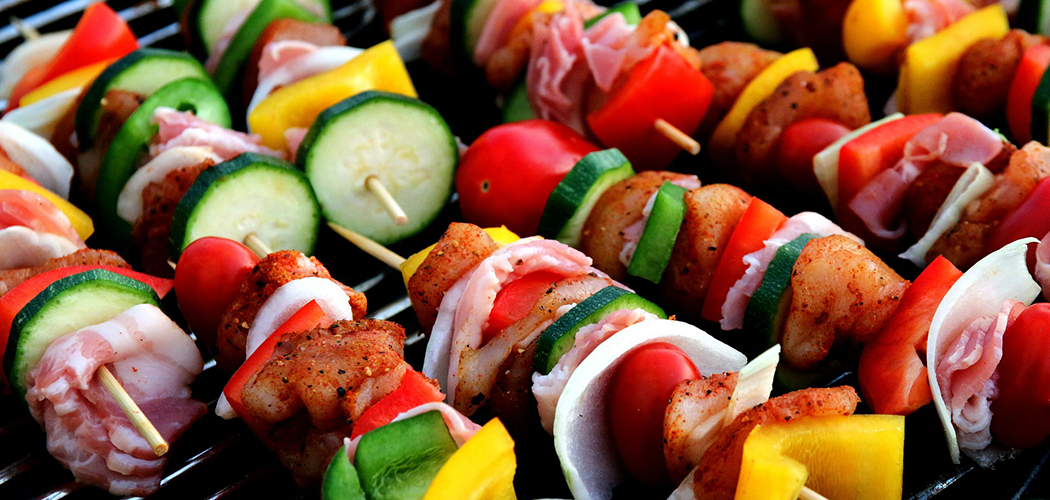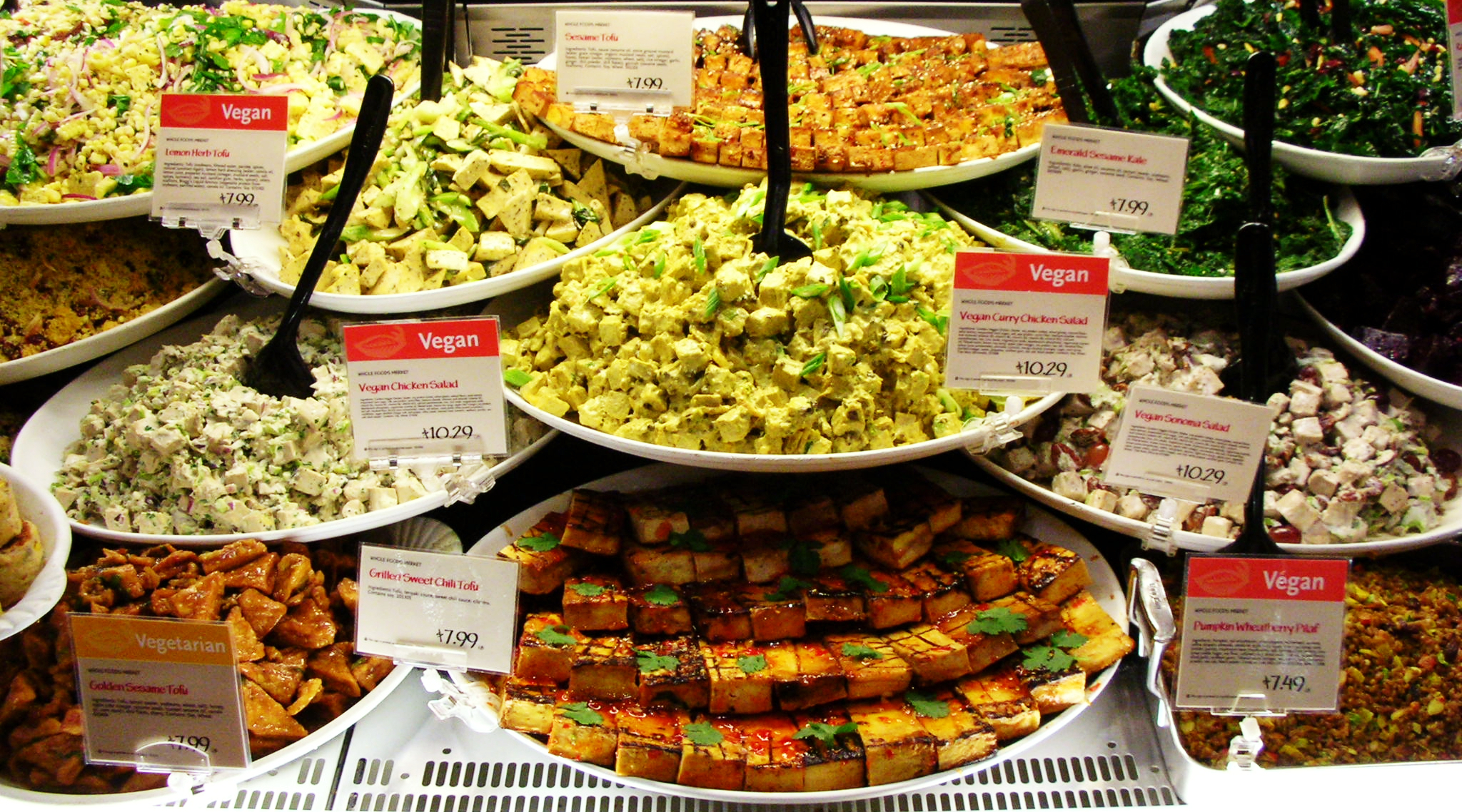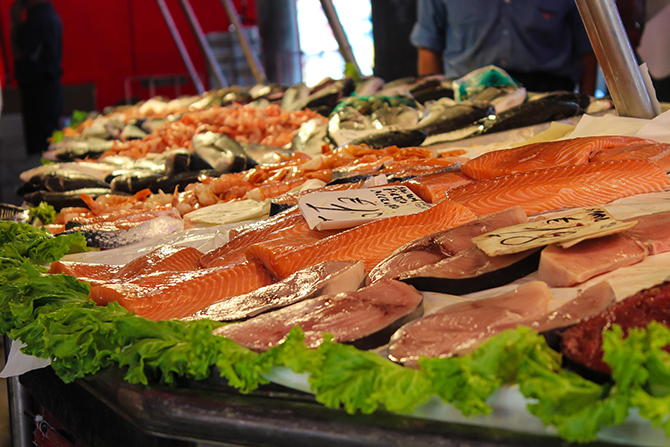In this post Dr Mark Hyman shares the rationale behind his unique diet: being a pegan, a mix of the paleo and vegan diets.
As a doctor, it is my job to figure out the best way to keep my patients healthy. We now know that food is medicine, perhaps the most powerful drug on the planet with the power to cause or cure most disease. If I can accept that food is more than just calories and is information that controls every aspect of our biology and health, then I better know what to advise my patients to prevent, treat and even reverse chronic disease.
So the fundamental question of our time is: What should I eat to feel good, lose weight and get-slash-stay healthy?
On the one hand, NBA star Lebron James is eating paleo and the number one tennis player in the world cut out gluten and dairy before winning everything in just one year. But on the other hand, Rich Roll completed five Iron Man marathons in seven days on a vegan diet.
The Problem with nutrition research today
Looking at the research it is easy to get confused. Vegan diet studies show they help with weight loss, reverse diabetes and lower cholesterol. Paleo diets seem to do the same thing. So should you be shunning animal products and eating only beans, grains and veggies, or should you eat meat and fat without guilt and give up all grains and beans?
Essentially, each camp adheres to their diet with near religious fervor. And each can point to studies validating their point of view. We call this cherry picking. After reading dozens of studies on vegan and paleo diets, even I could get confused. But I don’t because I read between the lines, not just the headlines. I read the methods and analyze the actual data to learn what the studies actually demonstrate.
The problem with nutrition research is that most of it relies on large studies of populations and their dietary patterns obtained mostly through dietary questionnaires or 24-hour dietary recall. The first study linking saturated fats to heart disease by Ancel Keys (and on which 50 years of dietary policy to eat low fat was based) looked at about 30 men from Crete and their previous day’s diet and linked that to the fact they had fewer heart attacks than people from countries that ate more saturated fat. Skimpy evidence at best! In fact, most of the “evidence” that fat in general and saturated fat in particular is bad for us is being rigorously challenged by better and more specific research.
These type of studies are further complicated because it is very hard to tease out the factors that matter. For example, when Asians move from Asia to the US, they eat more meat and have more heart disease and cancer, but they also consume far more sugar. So it is the meat or is it the sugar? Hard to know. These types of population studies cannot prove cause and effect, only correlation.
Many experimental studies on vegan or paleo diets, which should give more direct evidence of cause and effect often have only small numbers of people in the study, making it hard to draw firm conclusions. Even worse is that the diets they use for comparison (the control group) are not ideal alternative diets. Comparing a vegan diet of chips and Coke, bagels and pasta to a paleo diet of healthy veggies and grass fed meat won’t be very helpful, nor would comparing a paleo diet of feedlot meat, bologna and no fresh veggies to a whole foods, low glycemic vegan diet.
Also, eating a low fat versus a high fat vegan diet has very different health benefits. The Eco-Atkins or high fat, high protein, low carb, low glycemic vegan diet performs better for weight loss and cholesterol lowering than a low fat vegan diet that avoids nuts, seeds and avocados.
RD Laing said that “scientists can’t see the way they see, with their way of seeing.”
Why you should be a pegan
So what’s an eater to do?
I vote for being a pegan or paleo-vegan, which is what I have chosen for myself and recommend for most of my patients. Keep in mind that most of us need to personalize the approach depending on our health conditions, preferences and needs.
[Editor’s note: Don’t forget to read our health disclaimer!]
What is a pegan? Well since I just made it up, I guess it’s up to me to define.
Let’s focus first on what is in common between paleo and vegan (healthy vegan). They both focus on real, whole, fresh food that is sustainably raised.
Here are the characteristics of a healthy diet everyone agrees on:
- Very low glycemic load – low in sugar, flour and refined carbohydrates of all kinds.
- High in vegetables and fruits. The deeper the colors, the more variety, the better. This provides a high phytonutrient content protective against most diseases. (Although the paleo camp recommends lower glycemic fruit such as berries.)
- Low in pesticides, antibiotics and hormones and probably no or low GMO foods.
- No chemicals, additives, preservatives, dyes, MSG, artificial sweeteners and other “Franken Chemicals” that you would never have in your pantry.
- Higher in good quality fats – omega 3 fats for all. And most camps advise good quality fats from olive oil, nuts, seeds and avocados. Although some, such as Drs. Esselstyn and Ornish still advise very low fat diets for heart disease reversal.
- Adequate protein for appetite control and muscle synthesis, especially in the elderly.
- Ideally organic, local and fresh foods should be the majority of your diet.
- If animal products are consumed they should be sustainably raised or grass-fed.
- If you are eating fish you should choose low mercury6 and low toxin containing fish such as sardines, herring and anchovies or other small fish and avoid tuna, swordfish and Chilean sea bass because of the high mercury load.
Now comes the areas of controversy
- Dairy – Both the paleo and vegan camps shun dairy and for good reason. While some can tolerate dairy, for most it contributes to obesity, diabetes, heart disease and cancer and may increase (not decrease) the risk of osteoporosis.
- Grains– For millions of Americans gluten creates inflammation, autoimmunity, digestive disorders and even obesity. But do all grains cause a problem? Even though we started consuming grains recently in our evolutionary history, they can be part of a healthy diet, but not in unlimited amounts.
- Any grains can increase your blood sugar. And if you eat any flours made from grains, you might as well be drinking a soda.
- Stick with small portions (1/2 cup at a meal) of low glycemic grains like black rice or quinoa.
- That said, for Type 2 diabetics wanting to get off insulin and reverse their diabetes and those with autoimmune disease, a grain — and bean-free — diet could be a good experiment for a month or two to see how it impacts health.
- Beans – Beans are a great source of fiber, protein and minerals. But they do cause digestive problems for some and if you are diabetic, a mostly bean diet can trigger spikes in blood sugar. Again, moderate amounts are OK – meaning about up to 1 cup a day. Some are concerned that beans contain lectins that create inflammation or phytates that impair mineral absorption.
- Meat – Here’s the sticky point. All meat is not created equally. Is it feed-lot beef that has more palmitic and myristic acid that raises cholesterol and increases inflammation, or is it grass fed beef that has more cholesterol neutral stearic acid and contains protective omega 3 fats and vitamins A and D that raises glutathione and other antioxidants? Eating sustainably raised, clean meat, poultry and lamb and other esoteric meats such as ostrich, bison or venison as part a healthy diet is not likely harmful and is very helpful in reducing triglycerides, raising HDL (or good cholesterol), lowering blood sugar, reducing belly fat, reducing appetite, raising testosterone and increasing muscle mass. On the other hand, eating a lot of meat puts pressure on the planet – more water use, more climate change, and more energy inputs. Eat meat as a side dish or condiment, and only consume meat which has been grass-fed and sustainably-raised.
- Eggs – For years we were taught that cholesterol is bad, that eggs contain cholesterol so they must be bad, so we all suffered through years of egg white omelets, leaving the vitamins, nutrients and brain fats like choline in the garbage. Now eggs have been exonerated and don’t have any impact on cholesterol and are not associated with increased risk of heart disease. They are a great low-cost source of vital nutrients and protein.
- Fish – If you are worried about mercury in fish (and you should be), then choose small, omega 3 fat rich fish such as sardines or wild salmon. If you are a vegan and don’t want to eat anything with a mother for moral or religious reasons, then that perfectly ok. But it’s critical to get omega 3 fats, and not just ALA (or alpha linolenic acid) found in plants. You need pre-formed DHA which is what most of your brain is made from. The good news – you can get it from algae.
- Everyone needs Vitamin D3 (unless you are life guard or run around naked south of Atlanta for at least 20 minutes a day, all year long). And omega 3 fats are hard to get for most. Supplements (or a regular sardine diet) are essential. And for vegans, Vitamin B12 is also critical.
So what’s an eater to do? Become a pegan or paleo vegan. Don’t worry about focusing on how much you eat, if you focus on what you eat, your body’s natural appetite control systems kick into gear and you eat less.
Here’s what that the diet looks like:
- Focus on the glycemic load of your diet. This can be done on a vegan or paleo diet, but harder on a vegan diet. Focus on more protein and fats. Nuts (not peanuts), seeds (flax, chia, hemp, sesame, pumpkin), coconut, avocados, sardines, olive oil.
- Eat the right fats. Stay away from most vegetable oils such as canola, sunflower, corn, and especially soybean oil which now comprises about 10 percent of our calories. Focus instead on omega 3 fats, nuts, coconut, avocados and yes, even saturated fat from grass fed or sustainably raised animals.
- Eat mostly plants – lots of low glycemic vegetables and fruits. This should be 75 percent of your diet and your plate. I usually make 2 to 3 vegetable dishes per meal.
- Focus on nuts and seeds. They are full of protein, minerals, and good fats and they lower the risk of heart disease and diabetes.
- Avoid dairy – it is for growing calves into cows, not for humans. Try goat or sheep products and only as a treat. And always organic.
- Avoid gluten – Most is from Franken Wheat – so look for heirloom wheat (Einkorn); if you are not gluten sensitive, then consider it an occasional treat.
- Eat gluten-free whole grains sparingly– they still raise blood sugar and can trigger autoimmunity.
- Eat beans sparingly – lentils are best. Stay away from big starchy beans.
- Eat meat or animal products as a condiment, not a main course. Read The Third Plate by Dan Barber to understand how shifts in our eating habits could save the environment and ourselves. Vegetables should take center stage and meat should be a side dish.
- Think of sugar as an occasional treat – in all its various forms (i.e., use occasionally and sparingly).
This way of eating makes the most sense for our health and the health of our planet. It is sustainable and kinder to animals. How do I eat? After researching nutrition for 30 years and analyzing thousands of scientific papers and treating tens of thousands of patients with food, I vote for being a pegan!
This article was originally published (complete with links to the studies mentioned) on Dr Mark Hyman’s site here.


